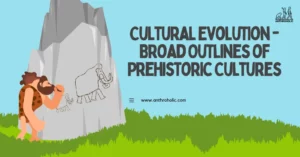AI Answer Evaluation Platform Live Now. Try Free Answer Evaluation Now
Polygamy
Polygamy is the marriage occurring between one person and multiple partners. While polyamory is a consistent umbrella term used for the various psychological, socio-economical and sexual implications of open relationships and having multiple partners, the subject of this article refers to the sub-category of marriage practice. In examining various cultures, the practice of polygamy occurs frequently in about 48% of 1231 societies, according to the Ethnographic Atlas Codebook (1998).[1]

Most modern religions look down upon polygamy and an urbanised modern framework of policy as well as social norm favours monogamy in most countries, albeit bearing a few exceptions.
Origin
The exact origin of polygamy is seldom known. Many anthropologists have come to regard the place of polygamy in the economic stability of past cultures. It is noted that having multiple wives (polygyny) is most common in the world and is concentrated in cultures practising farming subsistence. Such lifestyles demand more manpower for successful cultivation and management of wealth or property. Subsequently, having multiple wives served as a catalyst for having multiple male children who could all take care of the farming business. W.N. Stephens describes polygyny as a prestigious status among cultures like the Azanda, Greenland Eskimos, Subanum of Philippines and the Gusii of East Africa.[2] The success of large families was thus noted and had established itself as a source of pride. It is unclear whether having multiple wives was a better survival strategy or not. However, having multiple husbands for a woman (polyandry) has been scarcely found around the world since women can only bear one child per year, per man. This suggests that the politicisation of polygamy and its subsequent rise in popularity may have been a conscious decision among cultures.
Among chimpanzees, one of our closest relative species, the system of mating is described as polygynandrous where multiple males and females mate with multiple partners. As a result, there seems to be less information about the sociobiology of polygamy in terms of our evolution.
Types of Polygamy
Polygyny
Polygyny is defined as the marriage between one man and multiple women. This is the most commonly observed type. Ancient Hebrew society, classical China and Islam allowed polygynous marriages. Although popular, polygyny has always been a minority phenomenon broadly speaking. The economics of polygyny point to the affordability of having large families and multiple wives to the politically high ranking or rich males. Polygyny is prohibited in mainstream Christianity and thus, is absent in places majorly following the faith.
Sororal Polygyny
This sub-type of polygyny refers to a marriage where a man is married to multiple women who happen to be sisters. Generally, the oldest sister marries first followed by her younger sisters as they come of age. Over 40 % Native American tribes follow this practice. Some Indian tribes like Naga, Gond, Bhil and Baiga are suitable examples of sororal polygyny.
Polygyny is illegal in all countries except for India, Philippines and Singapore where Muslim populations are largely permitted.
Polyandry
This is a rare form of marriage where one woman has multiple husbands. While its rarity is often explained by population differences and sex ratio, polyandry remains a controversial subject within the discipline of anthropology. Polyandry outside of human species is correlated with reversed sexual dimorphism (where males are smaller than females).
In human populations, less than one percent of societies demonstrate this type of marriage according to Murdoch’s Ethnographic Atlas. In Christianity, polyandry is seldom entertained and found only in early Mormonism. Islam completely bans polyandry, while Hinduism depicts polyandry in the Mahabharata as Draupadi’s marriage to five brothers.
Local beliefs in Amazonian tribes celebrate polyandry as ‘multiple men fathering a single child’. This has been correlated with better chances of survival due to increased paternal care. However, this is highly non-scientific and anthropologists continue to doubt the credibility of polyandry as being anything more than a marginal set of perceived benefits.[3]
Fraternal Polyandry
This type of polyandry is where a woman is married to brothers. This is often associated with division of property or wealth. It is a preservation of family resources and has been found in certain tribes of Tibet[4] as well as some Northern tribes in Malwa region of Punjab.
Additionally, since a woman bears only one child per year in spite of increased sexual activity, this keeps the population under control which is beneficial in places like the Himalayas or mountainous regions where food is scarce and land infertile.
Group Marriage
It is the marital union between several men and women. Group marriage is a highly rare form of polygamy and is unconventional in many traditions. Some communities like Koinonia among the Natives in Georgia, USA and the ‘ZEGG’ in Germany are examples of this marriage. Group marriage is a complicated affair that suffers from many economical and emotional issues commonly found in other polyamorous practices.
Demographics
According to surveys in 2019 by Pew Research Center, 2% of global populations reside in polygamous households. Obviously this occurs legally and is concentrated in areas of West and Central Africa. It tends to be higher in Burkina Faso, Gambia and Mali. Depending on religious affiliations and nature of faith, these practices tend to show differing ratios, For example, the survey shows that 40% of Muslims in Nigeria reside in a polygamous household as opposed to 8% of Christians.
In spite of being associated with Islamic majorities, polygamous marriages are found to be less than 1% in Afghanistan, Pakistan, Iran, Egypt etc. In places of customary Islamic law like India it is less than 0.5% of the total population. The data is limited from Saudi Arabia, Qatar and the UAE where the practice remains legal.
Additionally, polygyny is the most commonly found practice in African contexts, where a form of consented polygyny is found. Such legal paradigms are placed which take into consideration the opinions of the previous spouses as well as the husband’s economic capabilities before the marriage is permitted.
Polygamy has been illegal in India since 1956 under the Hindu Marriage Act. Prior to this, having multiple wives was practised by rulers of princely states, who additionally also engaged in concubinage (having multiple sexual partners outside of wedlock).
Morality
The practice of having multiple marriage partners is the subject of major debates with regard to its moral implications and the impact it has across cultures. Different religions continue to look at the concept differently at different stages of development. As a result, the nature of faith and its command on majorities continue to dictate the legal aspects of polygamy across global societies.
In ancient Chinese history as well as Confucianism, the practice of multiple wives is uncommon but concubinage was legal as well as popular among rich men. Similarly, in the higher socio-economic classes of ancient Indian society, polygyny is not prohibited albeit not encouraged. It was elective but unpopular, as Vedic religion since the Atharvanic times promotes Gṛhastha ashrama which regards family as a foundation of good morals and values. Which a marriage with multiple partners would not necessarily allow.
In Judaism, the Torah seems to regulate polygamy while a series of Hebrew scriptures depict David, Moses, Esau, Abraham and Jacob as polygamists. Rabbinic Judaism forbids the practice, which prevailed until some time in 1948 among Sephardi groups. It is currently illegal in Israel.
The Catholic Church disregards polygamy and describes it as an offence toward the dignity of marriage which contrasts the moral law. A denomination of Christianity, called Mormonism, allowed a form of ‘plural marriage’ starting in 1843. Though the church later discontinued the practice, a large number of polygamous communities in the USA like Hilldale, Pinesdale, Rocky Ridge etc. use this as a religious basis.
Traditional Islamic law, found in verse 4:3 of the Quran sanctions men to have up to 4 wives with their own property and assets. The doctrine also prescribes a just and fair treatment of all the wives. According to some interpretations, polygamy in Islamic law serves to provide women with their own respectable position in society.
The United Nations Human Rights Committee has described polygamy as ‘violation of the dignity of women’ and has appealed for it to be abolished where it exists.
Advantages
A contextual aspect of the benefits of polygyny are noted among the Maasai of Tanzania. In a research, anthropologist Monique Mulder surveyed 56 villages in Tanzania consisting of monogamous and polygamous households. It showed that polygynous households had –
- Higher number of cattle and more area of farming land.
- Better access to resources and healthier overall health (including children).
- Better family dynamics and co-residential relationships of fathers with their children.[5]
This research does provide some context-specific ecological insights. The region suffers from problems like malnutrition, droughts and other socio-political disadvantages. As a result, choosing a polygamous relationship and sharing of husbands may provide women with better social outcomes. The data suggests that polygyny thus, is a form of survivability success where a woman may feel restricted if monogamy is enforced.
Additionally, a recent article by Miriam Zeitzen describes the following benefits of polygyny –
- Generation of status and power through prestige.
- Securing resources through stable subsistence and appropriation of labour (of the wives and children).
- Provision of varied sexual access through multiple partners.[6]
Disadvantages
Anthropologist M.F. Nimkoff in his Comparative Family Systems (1965) describes industrialised society as moving away from polygyny.[7] This is in favour of a more equal social framework toward women as monogamy tends to promote freedom of choice, dignity of women and equal rights to the dissolution of marriage. Anthropologists of the time, use polygyny to explain cultures where women were creators of progeny and potential contributors [8] to subsistence economies. Nimkoff uses industrialisation and its combination with influence of western ideals to explain the shift.
Moreover, polygamy is regarded as a threat to the conjugal family system which allows various psychological benefits as well as enhanced child rearing responsibilities. John Locke, the philosopher, has also described polygamy as being in contrast with a child’s right to be properly nurtured. Based on various statistical surveys, children born in family systems outside of conjugal parentage are shown to develop behavioural and emotional problems leading to substance abuse.
Conclusion
Polygamy is distinct from polyamory as most cultures historically did not ban multiple partners; however, a marital relationship under that connotation is seldom found. It is imperent to discuss its types including polygyny and polyandry which serve to represent the subsistence economies of cultures, if not their religious implications. A case is made of the various global cultures, which show the legal and moral aspects of polygamous relationships in a cross-cultural perspective. Lastly, the pros and cons of having multiple marriage partners paints a picture of how difficult and complicated it is to fully analyse the practice especially in contemporaneous times. To conclude, sociologist Stephens calls polygyny a ‘source of prestige and value which carries certain penalties for the individual’.[9] A notion that this article presents to be true in light of the industrialised modern society which evolves to promote neolocalisation and individualisation.
Frequently Asked Questions about Polygamy
References
[1] Murdock G. P. (1967). Ethnographic atlas. University of Pittsburgh Press.
[2] Stephens, W. N. (1963). The Family in Cross-cultural Perspective. Holt, Rinehart and Winston.
[3] Beckerman, Stephen and Paul Valentine, eds. 2002. Cultures of Multiple Fathers: The Theory and Practice of Partible Paternity in Lowland South America. University Press of Florida.
[4] Willett, Jeff. 1997. Tibetan Fraternal Polyandry: A Review of its Advantages and Breakdown. Nebraska: University of Nebraska.
[5] Mulder, Monique Borgerhoff (1992). Women’s strategies in polygynous marriage. Human Nature 3 (1):45-70.
[6] Callan, Hilary (2018). The International Encyclopedia of Anthropology || Polygamy (Polygyny, Polyandry). , (), 1–2. doi:10.1002/9781118924396.wbiea1377
[7] Nimkoff, Meyer F. (1965). Comparative family systems. Boston : Houghton Mifflin
[8] Osmond, M. W. (1969). A Cross-Cultural Analysis of Family Organization. Journal of Marriage and Family, 31(2), 302–310. https://doi.org/10.2307/349946
[9] Singh, S. D. (1988). Polyandry in Ancient India. Motilal Banarsidass.




